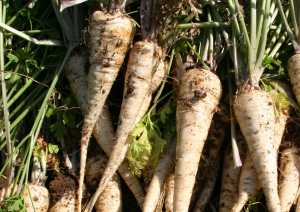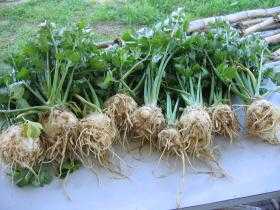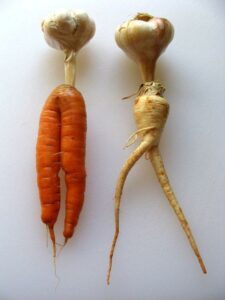Some Pre-Spring Messages:
- There will be no delivery over Chol Hamoed, Monday, April 14, and Wednesday, April 16.
- Deliveries scheduled for the Monday after Pesach will be moved to Tuesday, April 22.
A request to those of you who receive boxes every other week:
Since we do not deliver next week, after the Pesach holiday all bi-weekly delivery recipients will be receiving their boxes the same week, creating a very busy week for us and a scarce one the following week. This imbalance creates a hardship for us.
Therefore, we would like to request from anyone who can forfeit their post-holiday box (22/4 or 23/4) and renew their delivery cycles the next week to please inform us. This would mean that your next box will be delivered on 28/4 or 30/4 (and every other week afterwards). Everyone is welcome, of course, to purchase vegetables at the Open Day.
An additional option is to receive the vegetables for two consecutive weeks, on April 22nd and 28th or April 23rd and 30th, and then restart your bi-weekly deliveries afterwards. This, too, will help us balance our delivery schedule.
Please email us if you can be of assistance. Any and all help will be greatly appreciated!
Subscribing to our weekly newsletter:
The best way to receive messages and updates is via our weekly newsletter, which is published on our website and arrives directly to your email inbox. Those who do not receive the newsletter and wish to do so, please advise. If you prefer to receive a hard copy along with your box, please notify me.
Open Day at Chubeza:
In keeping with our twice-yearly tradition, we invite you for a Chol HaMoed “pilgrimage” to Chubeza to celebrate our Open Day.
The Pesach Open Day will take place on Thursday, April 17, the 17th of Nissan, between 1:00 PM -6:00 PM. For those of you who not yet haven’t experienced it, the Open Day gives us a chance to meet, tour the field, and nibble on vegetables and other delicacies. Children have their own tailor-made tours, designed for little feet and curious minds, plus activities and a vast space to run around and loosen up. (So can the adults…)
On the Open Day, we also have a stand for vegetable sales, so you can replenish your vegetable supply.
Driving instructions are on our website under “Contact Us.” Please make sure to check this out re heading our way.
Chag Sameach from all of us. We look forward to seeing you!
_________________________________
You’re invited to visit!
Our colleagues Puah and Oded of Meshek 42 in Tel Shachar, producers of the finest goat yoghurt, milk and labaneh, invite you to visit their wonderful goat farm over the Pesach break. There you can tour the goat herd and enjoy a day of fun in this very special farm. Besides the goats, you can also explore their apiary and olive groves.
On Thursday of Chol HaMoed, you can celebrate an exceptional day by coming to the Chubeza Open House, and then continuing a short distance to visit the wonders of Meshek 42. We’ll give you full travel instructions.
___________________________________
The Week After Pesach:
For those of you who will be receiving a delivery on Tuesday April 22nd, immediately following the holiday, the Chubeza online order system will close on Saturday night April 19th at 8 PM. This will enable us to prepare the harvest day in advance and make deliveries on Tuesday. For Wednesday deliveries that same week, the order system will close at 8:00 AM on Tuesday, as usual. For all special orders and any changes in your regular order, please keep these deadlines in mind.
We wish you a delightful, relaxing and meaningful holiday!
___________________________________
The Root of the Soup
Spring is indeed here. Our bodies are already gearing up for the transition from winter to summer, groaning under the heat of the journey. During this period, as the sun begins to swelter and Pesach is in the offing, I’m quite pleased that we came out of Egypt and that the summer ahead will be an Israeli summer. Despite it all, our summers are still a bit less blistering than those to the south of us in Egypt….
This week, your boxes will contain the special guest vegetables—-celery and parsley roots! This year’s first parsley-root-round was not successful, thus they are only making their debut in your boxes this week. Our pre-Pesach Newsletter is dedicated to both the celeriac and the parsley root. Enjoy these healthy, delicious roots in your special holiday dishes!
Every plant needs roots and leaves, of course. The roots draw up the nutrients from the earth, and the leaves act as conduits to transform sunrays into available energy for the plant. This is why all parsley leaves have a root, and every parsley root has leaves (which look like… parsley, of course.) But not every parsley variety produces the root we call “root parsley.” The leaf parsley is satisfied with modest, thin roots and does not develop a thick root. The root parsley was developed over the years by farmers in the ongoing process of selecting preferred species and cultivating them. Thus, alongside the seeds kept from year to year from the plants boasting the biggest leaves or best taste or highest durability to extreme temperatures or pests, other seeds were kept as well– those of plants whose roots thickened. The “cultivated” result is the species we call “root parsley,” a savory delight to add to the soup. Today it is a totally different species than the parsley grown for its leaves.
The root parsley (also called Dutch Parsley, Hamburg Parsley, Rooted Parsley, Turnip-Rooted Parsley, Heimischer, Petoushka…) only grows in wintertime. Unlike its sister which grows leaves in summer as well–even under the scorching Israeli sun–the root parsley hates heat, and grows in winter’s low temperatures and high humidity. It also needs a lot more time to reach maturity. The roots appearing in your boxes were seeded in autumn and have been growing underground for some five months now (leaf parsley is ready in two to three months). The main challenge in growing it is the thinning-out process. This parsley’s elongated roots need space to grow and fatten up, so it’s crucial to thin the bed which was manually seeded and thus grows plants in dense proximity. When we thin them, we remove some of the young sprouts, allowing their siblings some more “growing space.” We do not always do this in time, and therefore we pack a bunch of some smaller parsnips in order to reach at a suitable-sized portion.
The celeriac is a cultivated species, like its brother the stalk celery, meaning it was cultivated over hundreds of years. Farmers sought its thickened root, selecting from season to season only the celery varieties which produced the chubbiest, biggest roots. In this case, the stems remained short and thin, with a taste far more prominent than that of stalk celery. Often the stems are hollow, like a straw. When you look at a bed of stalk celery alongside one of celeriac, it’s easy to identify them by the different way the leaves grow. The former are erect and long, the latter chubby and spread out.
Celery is a plant which grows slowly. It starts with its teeny, tiny seeds which take their time, two-to-five weeks, till they sprout. After their diminutive sprouting, they need at least another two months of devoted care in the warm, protected temperature of the plant nursery. Only after three months are they ready to be planted. We receive the young’uns when they’re approximately three months of age and ready to be lifted out of their black plastic cube and placed in the fertile earth of Chubeza’s field.
Celery loves fertile earth and lots of water. As a plant which originated in the swamps, it likes humidity in the earth and also in storage, which is why it grows in wintertime in Israel. The Israeli summer is difficult and dry for the crisp celery plant. After three months in the nursery, it needs another three months to reach the prime age at which its leaves and stems can be harvested. The species which develops a thick root is even more patient, waiting another month under the warm cover of Mother Earth and refusing to be coaxed out of its warm bed to the cold, raging winter. A simple calculation leads to the conclusion that the lovely celeriac visiting your boxes this week was created seven months ago!
And though its time has come, the celeriac still holds on to the earth with all its might, and is not easily convinced to emerge. When we harvest the celeriac, we use a knife and gently release it by cutting the surrounding slender roots. Upon retrieving it from the earth, we attempt to shake it well and cut off the remaining clumps of earth still caught within. After this initial cleansing, we lead it to our vegetable washing tubs where it soaks for a while. Even so, when it arrives, you may still see remains of dirt. Immerse in water for some 30 minutes to expedite the final cleaning.
So holding these two yummy roots in your palms, you must want to rush to the kitchen to prepare some soup. But wait! First have a look at this week’s recipes for delectable uses of these roots in a host of ways. A must!
Lastly, in honor of our distinguished root vegetables, I’m delighted to share this charming picture sent last year by Daniel from Modi’in. The caption read: “Do Chubeza vegetables have a secret, enchanted life, where they dance the night away?”
Chag Sameach!
Alon, Bat-Ami, Dror, Maya and all of us in Chubeza.
_________________________
What’s in this week’s box?
Monday: cabbage/cauliflower, carrots, red leaf/Romaine lettuce, tomatoes, kohlrabi, red beets, cucumbers, parsley, celery/celeriac, zucchini, parsley root
Large box in addition: fava beans/green garlic, radishes, leek/chive, beet greens/Swiss chard
Wednesday: kohlrabi, carrots, cucumbers, celery, cilantro/parsley, zucchini, leek/chive, red leaf/Romaine lettuce, cabbage/cauliflower, tomatoes, red beets- small boxes only.
Large box in addition: green garlic/fava beans, Swiss chard, parsley root, radish/fennel
And there’s more! You can add to your basket a wide, delectable range of additional products from fine small producers: flour, fruits, honey, dates, almonds, crackers, probiotic foods, dried fruits and leathers, olive oil, bakery products, pomegranate juice and goat dairy too! You can learn more about each producer on the Chubeza website. On our order system there’s a detailed listing of the products and their cost, you can make an order online now!
_________________________
Roots recipes:
Caramelized Assorted Root Vegetables
Parsley root fries with roasted tomatoes ketchup
Parsley root recipes from Mariquita farm
Smashed celeriac – Jamie Oliver
Celery root soup – David Labovitz
Roasted Celery Root with Maple Apple Butter – Emeril Lagasse, Planet Green
Turkish celery root (Kereviz Kökü) – inspired by the book “Anatolian Feast”



